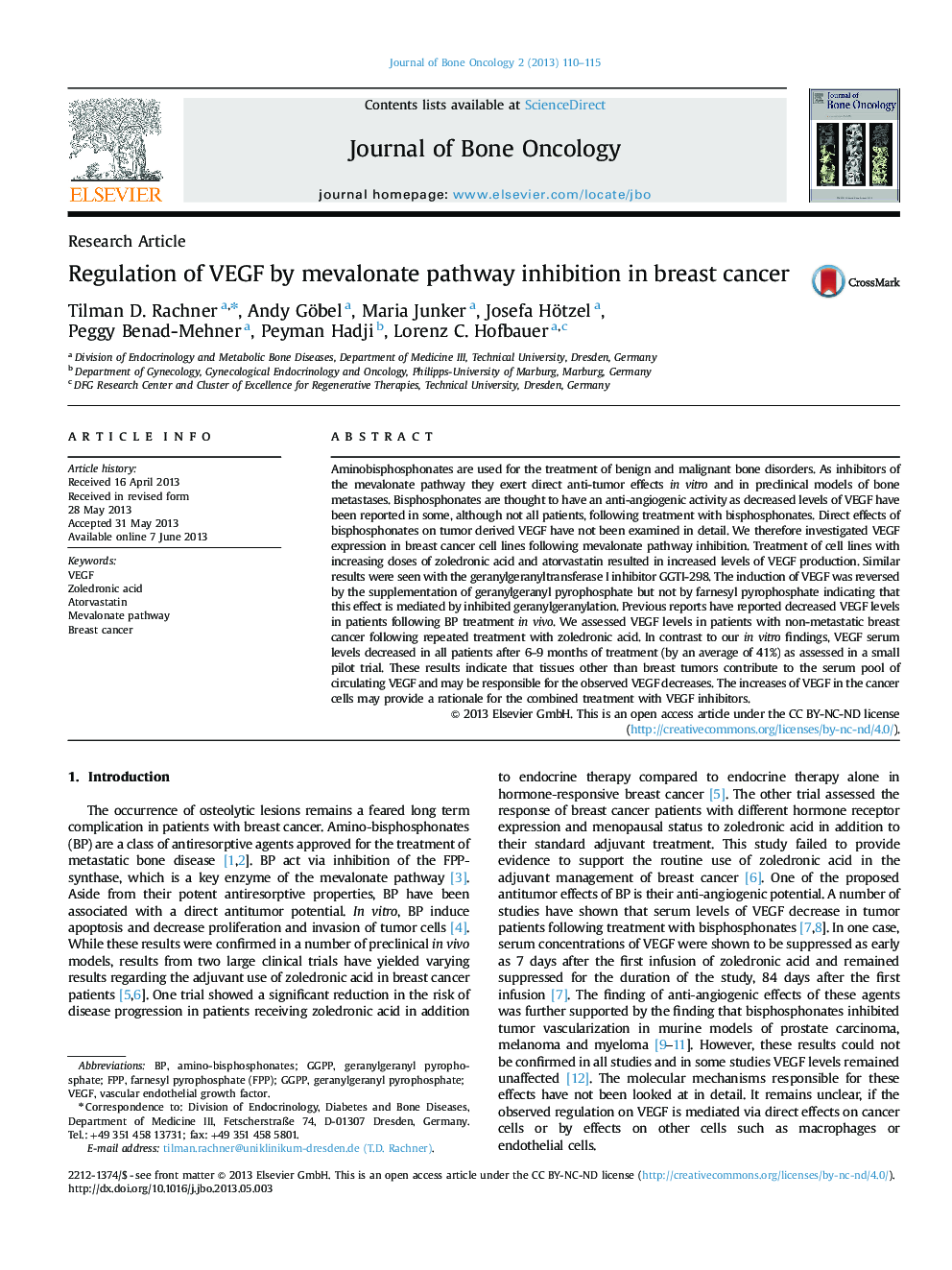| Article ID | Journal | Published Year | Pages | File Type |
|---|---|---|---|---|
| 2136244 | Journal of Bone Oncology | 2013 | 6 Pages |
Aminobisphosphonates are used for the treatment of benign and malignant bone disorders. As inhibitors of the mevalonate pathway they exert direct anti-tumor effects in vitro and in preclinical models of bone metastases. Bisphosphonates are thought to have an anti-angiogenic activity as decreased levels of VEGF have been reported in some, although not all patients, following treatment with bisphosphonates. Direct effects of bisphosphonates on tumor derived VEGF have not been examined in detail. We therefore investigated VEGF expression in breast cancer cell lines following mevalonate pathway inhibition. Treatment of cell lines with increasing doses of zoledronic acid and atorvastatin resulted in increased levels of VEGF production. Similar results were seen with the geranylgeranyltransferase I inhibitor GGTI-298. The induction of VEGF was reversed by the supplementation of geranylgeranyl pyrophosphate but not by farnesyl pyrophosphate indicating that this effect is mediated by inhibited geranylgeranylation. Previous reports have reported decreased VEGF levels in patients following BP treatment in vivo. We assessed VEGF levels in patients with non-metastatic breast cancer following repeated treatment with zoledronic acid. In contrast to our in vitro findings, VEGF serum levels decreased in all patients after 6–9 months of treatment (by an average of 41%) as assessed in a small pilot trial. These results indicate that tissues other than breast tumors contribute to the serum pool of circulating VEGF and may be responsible for the observed VEGF decreases. The increases of VEGF in the cancer cells may provide a rationale for the combined treatment with VEGF inhibitors.
